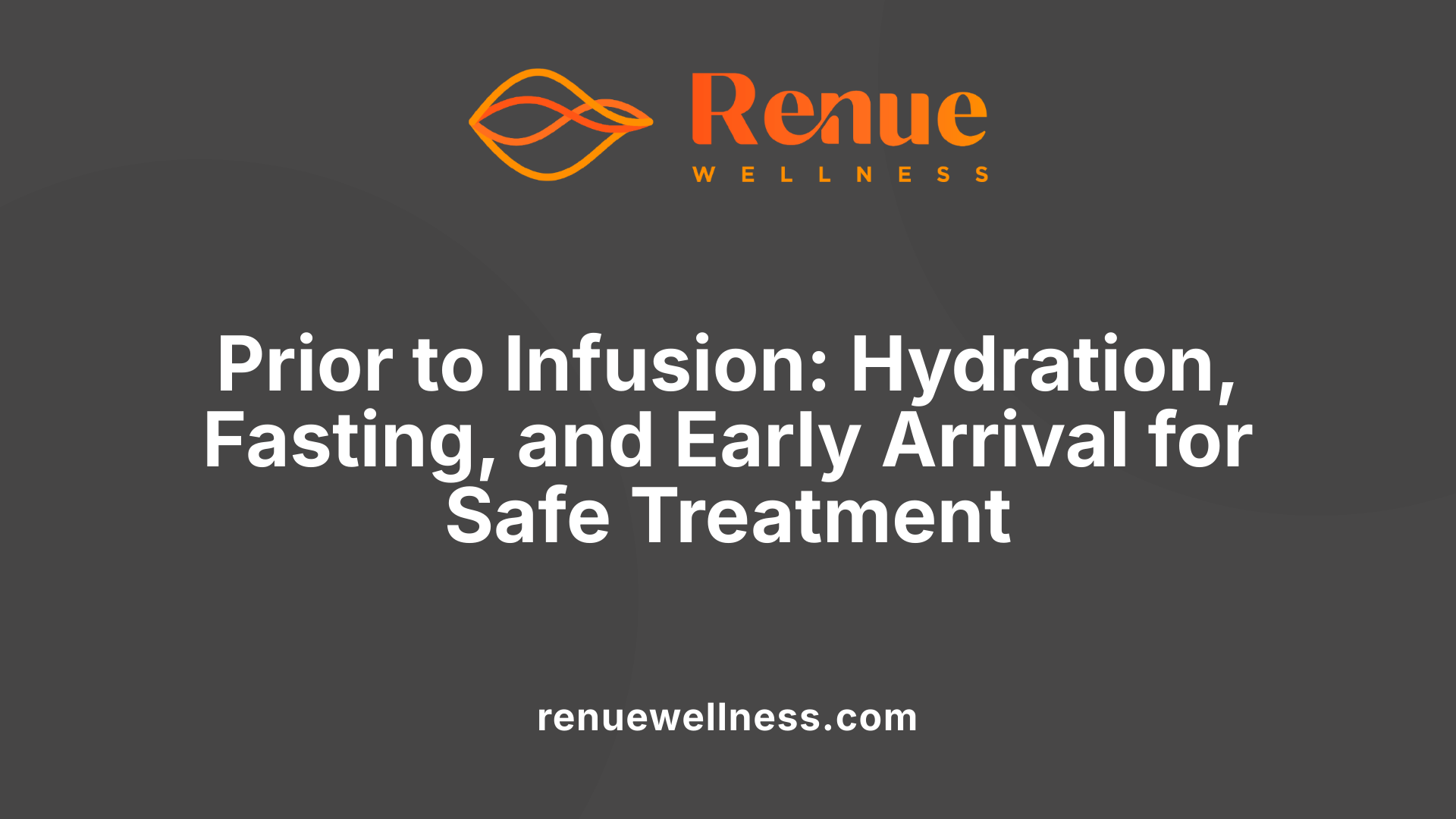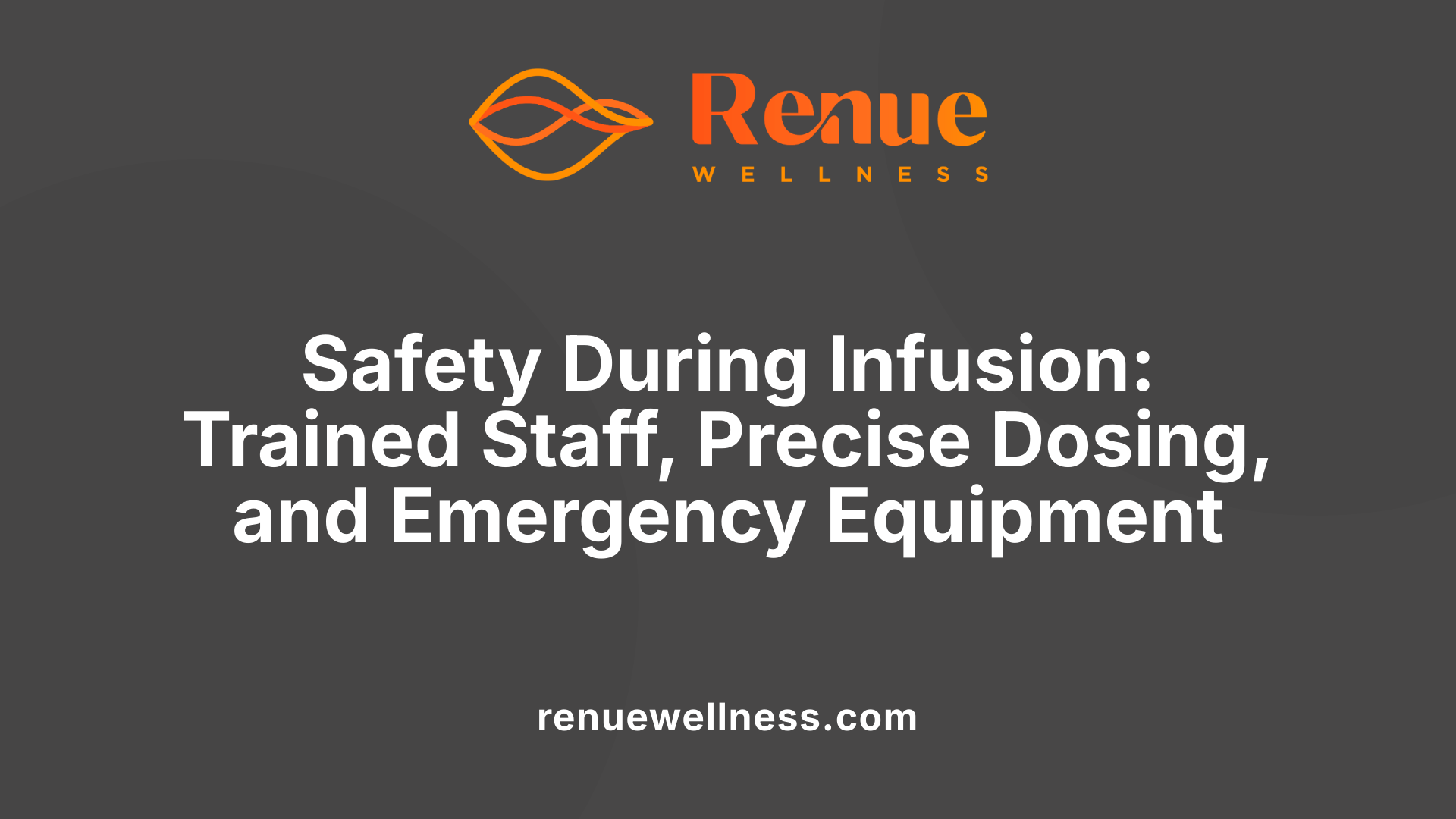Safety Protocols Before, During, and After Ketamine Infusions


August 14, 2025
Understanding the Critical Role of Safety Protocols in Ketamine Infusions
Ketamine infusion therapy, a promising treatment for various mental health conditions, necessitates rigorous safety protocols to ensure patient well-being. From pre-treatment preparations to post-treatment care, healthcare providers and patients alike must adhere to established guidelines to minimize risks and maximize therapeutic benefits. This article explores comprehensive safety measures essential at every stage of ketamine administration, emphasizing preparation, monitoring, and aftercare.
Pre-Treatment Safety Preparations and Assessments

How should patients be prepared for a ketamine infusion in terms of safety precautions?
Preparing for a ketamine infusion involves several crucial safety measures to ensure patient well-being. Patients need to be well-informed about the treatment process, including potential side effects like dissociation, dizziness, or nausea, and the safety protocols in place. They should avoid alcohol and recreational drugs at least 24 hours before the session to prevent adverse interactions.
Fasting for several hours (typically 4 hours for solids and 2 hours for liquids) helps reduce the risk of nausea and vomiting during the infusion. Hydration is important, so patients are encouraged to stay well-hydrated before treatment.
A review of current medications is essential, especially drugs like Lamictal (lamotrigine) and benzodiazepines, to avoid harmful interactions. Comfortable clothing and items like blankets, headphones, or eye masks can enhance relaxation.
On the treatment day, patients should arrive early—about 15 minutes prior—and organize transport, as having a trusted person to drive them home afterward is highly recommended. During the infusion, close monitoring of vital signs and patient feedback allows the medical team to respond promptly to any concerns.
Post-infusion, rest, hydration, and avoiding alcohol or strenuous activity help facilitate recovery. Follow-up with healthcare providers is vital to monitor progress and address any side effects or complications.
Overall, a comprehensive safety plan involves patient education, medication review, supportive environment, and vigilant medical monitoring throughout the process.
Monitoring and Safety During Infusion

What are the safety protocols and considerations for administering ketamine infusions?
Safety protocols for ketamine infusions are designed to minimize risks and ensure patient safety throughout the procedure. Prior to treatment, comprehensive screening is essential to identify contraindications such as active psychosis, uncontrolled cardiovascular conditions, or substance abuse issues. This includes a thorough review of the patient's medical and psychiatric history and physical examinations, along with necessary laboratory tests like liver function and kidney profile assessments.
During the infusion, vital signs—including blood pressure, heart rate, oxygen saturation, and respiratory status—must be continuously monitored by trained healthcare professionals in a facility equipped with emergency response tools like oxygen tanks, crash carts, and airway management equipment. Doses are carefully titrated, typically between 0.5 to 1.0 mg/kg over about 40 minutes, with constant assessment for signs of excessive sedation or adverse reactions. Proper documentation, informed consent, and patient education about potential side effects and safety measures form a core part of the protocol.
Post-treatment, patients are observed until they return to their baseline mental status and vital signs stabilize. They should have a responsible driver for transportation home, as residual effects of ketamine, such as dizziness or dissociation, may persist for several hours. Follow-up involves psychiatric assessment, monitoring for adverse events, and planning for maintenance infusions or additional therapy sessions under continuous professional oversight.
In addition, measures to prevent drug diversion, ensure proper disposal of unused medication, and adhere to legal regulations are critical for safety. Overall, the management is rooted in a multidisciplinary approach, emphasizing meticulous patient screening, vigilant monitoring, and emergency preparedness.
Ensuring Ongoing Safety and Efficacy in Ketamine Therapy
The safety of ketamine infusion therapy hinges on meticulous preparation, vigilant monitoring, and comprehensive post-treatment care. Adherence to established protocols and guidelines by healthcare professionals not only minimizes risks but also enhances the therapeutic outcomes for patients. Continual education, thorough assessments, and vigilant oversight throughout every phase of treatment are essential in safeguarding patient health. As research advances and protocols evolve, maintaining a steadfast commitment to safety will remain central to the responsible administration of ketamine therapies, fostering trust and delivering effective mental health care.
References
- What Should You Do Before and After a Ketamine Infusion?
- What Should I Do Before & After a Ketamine Infusion?
- Safety Information for ketamine treatment - Isha Health
- Ketamine Checklist | APNA - American Psychiatric Nurses Association
- Pre-Treatment Instructions - Ketamine Wellness Institute
- What to Do After Ketamine Treatment: Aftercare Tips From Our Care ...
- Preparing for Ketamine-Assisted Psychotherapy
- Preparing for Treatment - American Society of Ketamine Physicians
- Ketamine Infusion Preparation in Redding CA | SMWC
- what to do after ketamine infusion: a Day-by-Day Guide
Recent Posts
Conditions Treated
AnxietyDepressionOCDPTSDPostpartum DepressionPain ManagementSubstance AbuseSuicidal IdeationOur Location


